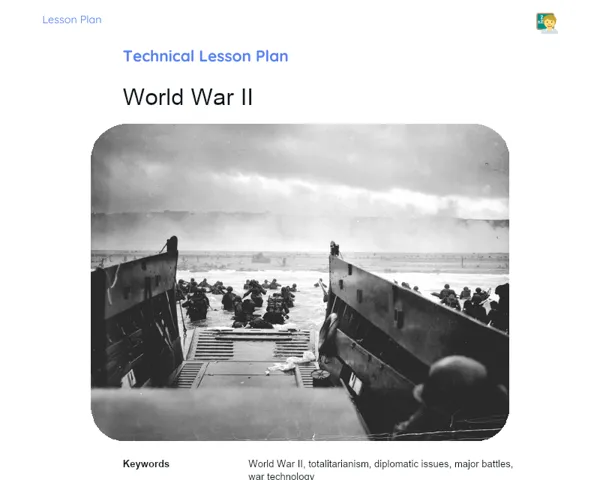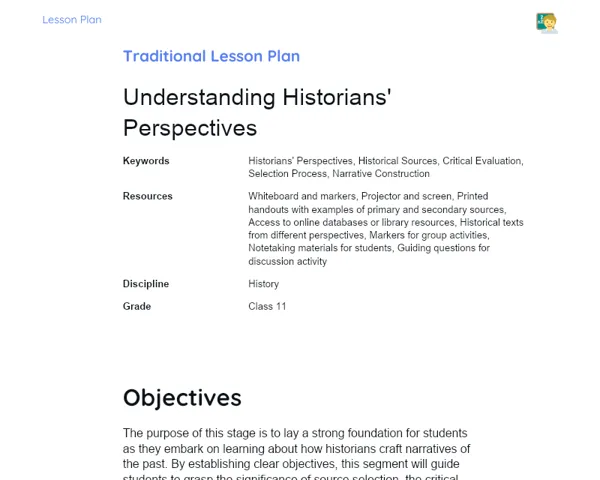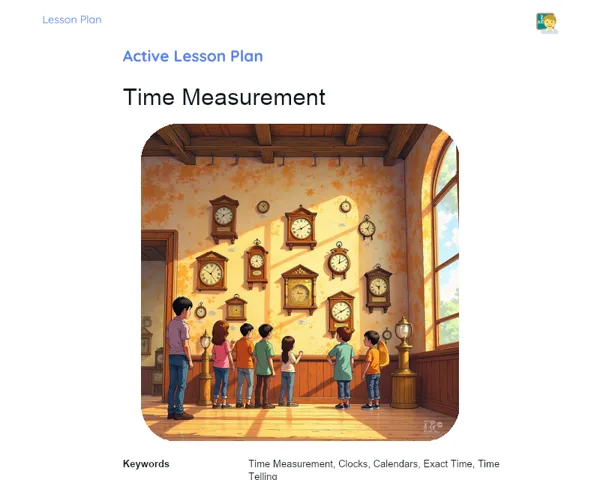Lesson Plan | Socioemotional Learning | Enlightenment: Review
| Keywords | Enlightenment, History, Eighteenth Century Revolutions, Socio-emotional Skills, Self-awareness, Self-regulation, Responsible Decision-Making, Social Skills, Social Awareness, Guided Meditation, Debate, RULER, Reflection, Emotional Regulation |
| Resources | Comfortable seating, Notes on the Enlightenment, Paper, Pens, Posters or whiteboards, Markers, Computer with internet access (optional), Projector (optional) |
| Codes | - |
| Grade | 12th grade |
| Discipline | History |
Objective
Duration: (10 - 15 minutes)
This segment of the Socio-emotional Lesson Plan aims to introduce students to the theme of the Enlightenment, stressing its historical importance and its impacts on thought and revolutions of the 18th century. Additionally, this phase is designed to equip students with socio-emotional skills for the lesson, thereby fostering a more introspective and integrated learning atmosphere.
Objective Utama
1. Understand the significance of the Enlightenment movement and its impact on modern thought.
2. Explore the connections between the Enlightenment and the revolutions of the 18th century.
3. Foster socio-emotional skills by examining the causes and effects of emotions that influenced historical movements.
Introduction
Duration: (15 - 20 minutes)
Emotional Warmup Activity
Guided Meditation for Focus and Concentration
The Guided Meditation activity is crafted to enhance students' focus, presence, and concentration. This practice involves leading students to connect with their breathing and calm their minds before diving into the lesson. Guided meditation is a method that aids in stress reduction and boosts mental clarity, getting students ready for more effective learning.
1. Ask students to sit comfortably in their chairs with their backs straight and feet flat on the ground.
2. Encourage them to either close their eyes or focus on a single point in front of them.
3. Guide students to place their hands gently on their knees or in their laps.
4. Instruct them to begin paying attention to their breath, feeling the air coming in and out through their nostrils.
5. Tell students to inhale deeply through their nose, hold it for a few seconds, and then exhale slowly through their mouth.
6. Continue guiding the breath for a few minutes, urging students to concentrate solely on the sensation of the air flowing in and out.
7. If students' minds begin to wander, kindly prompt them to refocus on their breathing.
8. After about 5 to 7 minutes, invite students to slowly open their eyes and gently stretch, preparing for the class.
Content Contextualization
The Enlightenment was a significant intellectual movement that introduced revolutionary ideas about freedom, equality, and human rights, deeply impacting the revolutions of the 18th century. To grasp its significance better, let’s reflect on how we feel when advocating for something we believe is just. Emotions of hope, determination, and even frustration mirror the feelings experienced by individuals from that era who fought for social reform.
When delving into the Enlightenment, recognizing the emotions that sparked these movements is vital, understanding their causes and consequences, and learning to express and manage these emotions properly. This not only deepens our historical comprehension but also hones crucial socio-emotional skills necessary for everyday life.
Development
Duration: (60 - 75 minutes)
Theory Guide
Duration: (25 - 30 minutes)
1. Enlightenment: An intellectual movement during the 18th century that championed reason, science, and individual freedom. Notable Enlightenment philosophers included Voltaire, Rousseau, Montesquieu, and Diderot.
2. Rationalism: The belief that human reason is the primary source of knowledge and understanding. Descartes was a prominent proponent of rationalism.
3. Empiricism: The theory that all knowledge stems from sensory experience. John Locke and David Hume were key figures in empiricist thought.
4. Freedom and Equality: Core ideals of the Enlightenment asserting that every individual possesses inherent rights to freedom and equality. These principles greatly influenced movements such as the French Revolution and the American Revolution.
5. Separation of Powers: Proposed by Montesquieu, this principle advocates that government powers should be divided into three independent branches: executive, legislative, and judicial, to prevent misuse of power.
6. Social Contract: Rousseau's theory suggesting that society is built on an implicit agreement among individuals to establish a government safeguarding their rights and welfare.
7. Encyclopedia: A landmark project coordinated by Diderot and d'Alembert that compiled contemporary knowledge and disseminated enlightenment ideas, promoting broader education.
8. Influence on Revolutions: Enlightenment principles had a significant impact on the revolutions of the 18th century, including the French Revolution, the American Revolution, and independence movements in Latin America, which sought to actualize ideas of freedom, equality, and human rights as conveyed by Enlightenment thinkers.
Activity with Socioemotional Feedback
Duration: (35 - 40 minutes)
Socio-emotional Debate: Enlightenment and Its Emotions
In this exercise, students will engage in a structured debate discussing the emotions and motivations underpinning the ideologies and events of the Enlightenment and the revolutions of the 18th century. The aim is to enhance understanding of both historical and contemporary emotions while fostering communication and empathy skills.
1. Divide the class into small groups of 4 to 5 students.
2. Assign each group a specific theme related to the Enlightenment (e.g., freedom, equality, rationalism, empiricism).
3. Prompt each group to deliberate on how these themes may have elicited various emotions in people at the time (e.g., hope, fear, anger, joy).
4. Each group should summarize their discussions in a brief presentation (5 minutes), highlighting the emotions they identified and exploring their causes and effects.
5. After the presentations, facilitate a question-and-answer session among the groups.
6. Conclude the session with a collective reflection on the relevance of these emotions and ideas in today's context.
Discussion and Group Feedback
To implement the RULER method during the group discussion, begin by encouraging students to Recognize the emotions that arose during their debates and presentations. Ask how they felt while discussing themes of the Enlightenment, and if they could relate to emotions experienced by individuals of that time.
Next, guide students to Understand the reasons behind these emotions, both in their historical context and present-day context. Ask what stirred these feelings in Enlightenment thinkers and revolutionary figures and how such emotions shaped their actions.
Encourage students to Name the emotions they identified, fostering a discussion on the significance of accurately recognizing feelings to manage them better. Prompt them to Express their emotions in a considerate manner, actively listening and respecting their classmates' opinions.
Finally, assist students in Regulating their emotions by discussing techniques for managing intense feelings during debates and how these skills can be useful in other areas of their lives. This process helps build students' emotional intelligence and enhances their communication and empathy capabilities.
Conclusion
Duration: (20 - 25 minutes)
Reflection and Emotional Regulation
For the reflection and emotional regulation activity, suggest that students engage in either a written reflection or a group discussion regarding the challenges faced during the lesson and how they managed their emotions. Encourage them to reflect on specific instances when they experienced difficulties or strong feelings and articulate how they handled those emotions. They can jot down their thoughts in their notebooks or share in small groups, discussing strategies they employed to maintain emotional composure and areas for future improvement.
Objective: The goal of this activity is to promote self-assessment and emotional regulation, aiding students in identifying effective strategies for handling challenging situations. This reflection encourages self-awareness and equips them with skills to manage emotions constructively in both academic and personal settings.
Glimpse into the Future
To wrap up the lesson, the teacher can guide students in setting personal and academic goals relevant to the content of the Enlightenment. Ask students to contemplate how they can apply Enlightenment principles in their own lives, both in terms of ethical behavior and enhancing their critical thinking. They may write their goals on paper and share them with the class if they feel comfortable.
Penetapan Objective:
1. Research further about Enlightenment philosophers and their contributions.
2. Incorporate the principles of rationalism and empiricism into school projects.
3. Practise emotional expression and regulation during school debates.
4. Reflect on themes of freedom and equality in today’s society.
5. Engage in discussions surrounding human rights and social justice. Objective: The aim of this subsection is to bolster students' autonomy and practical application of their learning, fostering continuity in both academic and personal growth. By establishing goals, students are motivated to become independent learners and to utilize Enlightenment concepts in real-world scenarios, encouraging ongoing and significant development.



